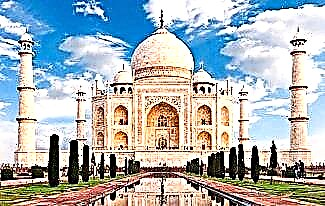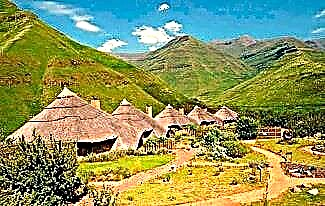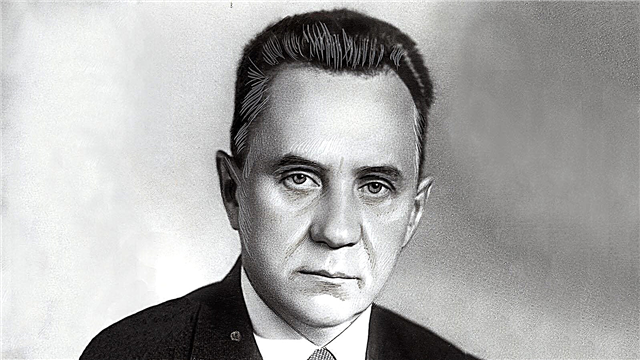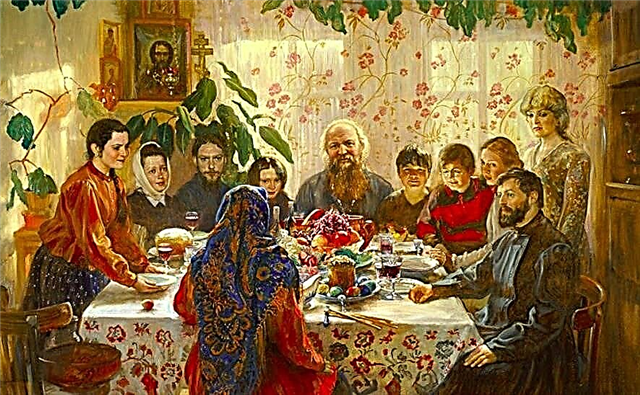Not far from the capital of Great Britain, where the official residence of Queen Elizabeth II is located, there is a small town of Windsor. Most likely, it would have remained a little-known provincial city if several centuries ago the rulers of England had not built a beautiful palace here, on the curved bank of the Thames.
Today, Windsor Castle is known all over the world as the summer residence of English monarchs, and hundreds and thousands of tourists come to the city every day to look at this miracle of architecture and the artistic values stored in it, to hear new interesting facts of its history and details of the queen's life. It is also worth remembering that since 1917 the royal family has borne the name Windsor, taken in honor of the city and the castle, in order to forget about German roots.
History of the construction of Windsor Castle
Almost a thousand years ago, William I ordered the construction of a ring of fortresses, towering on artificial hills, to protect London. One of these strategic fortresses was the wooden walled castle at Windsor. It was built 30 km from London in about 1070.
Since 1110, the castle served as a temporary or permanent residence for the English monarchs: they lived here, hunted, had fun, got married, were born, were in captivity and died. Many kings loved this place, so a stone castle with courtyards, a church, and towers quickly grew out of a wooden fortress.
Repeatedly the fortress was destroyed as a result of attacks and sieges and partially burned down, but each time it was rebuilt taking into account past mistakes: new watchtowers were erected, the gates and the hill itself were strengthened, stone walls were completed.
A magnificent palace appeared in the castle under Henry III, and Edward III erected a building for the meetings of the Order of the Garter. The War of the Scarlet and White Rose (15th century), as well as the Civil War between Parliamentarians and Royalists (mid-17th century), caused serious damage to the buildings of Windsor Castle. Also, many artistic and historical values stored in the royal palace and church were damaged or destroyed.
By the end of the 17th century, the reconstruction of Windsor Castle was completed, some of the premises and courtyards were opened to tourists. Major restoration was carried out already under George IV: the facades of buildings were redone, towers were added, the Waterloo Hall was built, the interior decoration and furniture were updated. In this updated form, Windsor Castle became the main residence of Queen Victoria and Prince Albert and their large family. The queen and her spouse were buried nearby, in Frogmore, a country residence located 1 km from the building.
At the end of the 19th century, the palace was supplied with water and electricity; in the 20th century, central heating was installed, garages for the cars of the royal fleet were built, and a telephone connection appeared. In 1992, there was a major fire that damaged hundreds of rooms. To raise money for the restoration, it was decided to start collecting fees for visits to Windsor Park and Buckingham Palace in London.
State of the art
Today, Windsor Castle is considered the largest and most beautiful residential castle in the world. Its territory occupies a plot of land 165x580 m. To maintain order and organize the work of the excursion premises, as well as to maintain the royal chambers and gardens, about half a thousand people work in the palace, some of them living here on a permanent basis.
About a million people come on excursions every year, especially a large influx of tourists is observed on the days of the Queen's scheduled visits. Elizabeth II comes to Windsor in the spring for a month, and in June for a week. In addition, she makes short visits to meet with officials of her country and foreign states. The royal standard, raised over the palace on such days, notifies everyone of the presence of the highest person of the state in Windsor Castle. The chances of meeting her with ordinary tourists are very small, the queen uses a separate entrance to the Upper Courtyard.
What to see
The royal family in England's politics does not play a practical role, but is a symbol of the country's power, constancy and wealth. Windsor Castle, like Buckingham Palace, is intended to support this claim. Therefore, the beautiful and luxurious residence of the monarch is open daily for visits, although it is not officially a museum.
You will have to spend several hours inspecting the entire building, and tourists are not allowed into all its corners. There is never crowding inside, because the one-time number of visitors is regulated. It is recommended to book group tours in advance.
You should behave calmly, after all, this is the place of residence of the queen and meetings of high-ranking people. At the entrance to Windsor Castle, you can not only buy tickets, but also purchase a detailed map, as well as an audio guide. With such an electronic guide, it is convenient to walk on your own, without joining groups, it gives a detailed description of all significant places. Audio guides are offered in different languages, including Russian.
The most interesting sight, for which some tourists come here several times, is the changing of the guard. The Royal Guard, which monitors the order and safety of the royal family, every day during the warm season, and every other day, at 11:00, holds a changing of the guard ceremony. This action usually lasts 45 minutes and is accompanied by an orchestra, but in case of bad weather the time is shortened and the musical accompaniment is canceled.
During excursions, tourists pay great attention to the following attractions:
- Round Tower... Tours usually start from this 45-meter tower. It was built on a hill as an observation point from which the surroundings were clearly visible. It was the seat of the legendary knights of the Round Table, and today the flag raised above the tower announces the presence of the queen at Windsor Castle.

- Queen Mary's doll house... It was created in the 1920s not for the purpose of playing, but to capture the life and life of the royal family. A toy house measuring 1.5x2.5 m introduces the interiors of an entire English royal palace in 1/12 scale. Here you can see not only miniature pieces of furniture, but even tiny paintings, plates and cups, bottles and books. There are elevators, running water in the house, electricity is turned on.
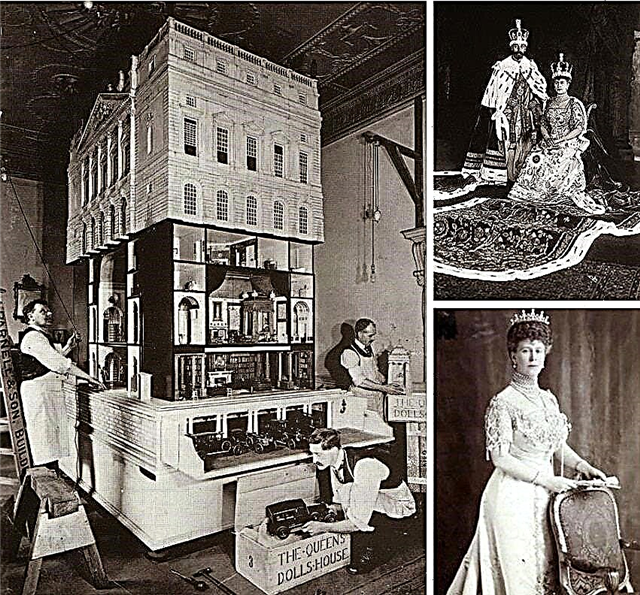
- Hall of Saint George... Its ceiling bears the heraldic symbols of the knights assigned to the Order of the Garter. Attentive visitors can see among them the coats of arms of Alexander I, Alexander II and Nicholas I, knighted.
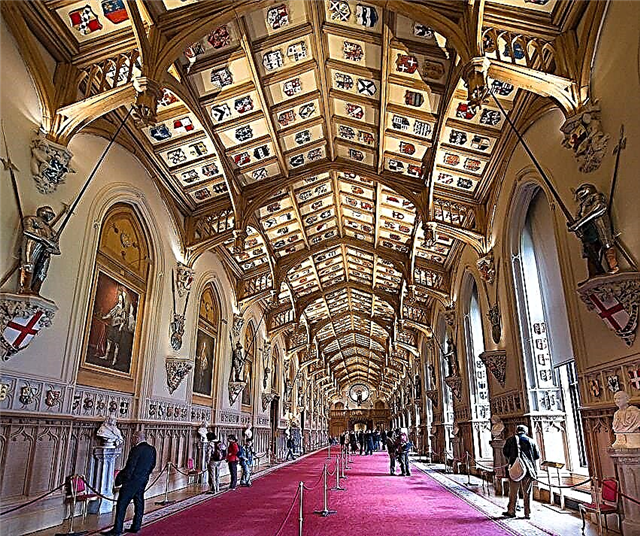
In addition, other halls and premises deserve attention:
- State and Lower Chambers.
- Waterloo Hall.
- Throne room.
We recommend seeing the Hohenzollern Castle.
They are open to visitors on days when there are no official receptions. In the halls, guests are presented with antique tapestries, paintings by famous artists, antique furniture, porcelain collections and unique library exhibits.
A visit to Windsor Castle acquaints tourists with significant pages of British history, reveals the world of luxury and grandeur of the English monarchs.
Helpful information
Hours of excursion ticket offices: from March to October 9: 30-17: 30, in winter - until 16:15. Taking photos inside the premises and the chapel of St. George is not allowed, but tourists are smart and take pictures of the camera angles they are interested in. They take pictures freely in the yard.
From London, you can get to Windsor Castle (Berkshire) by taxi, bus and train. At the same time, entrance tickets are sold directly on trains going to Windsor station from Paddington station (with a transfer to Slough) and Waterloo. It's very convenient - you don't have to queue at the gate.




